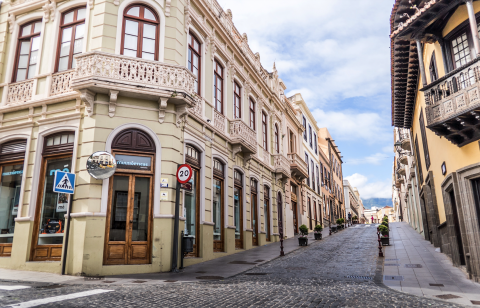
This street was transformed from a dirt road into an elegant cobbled street as a result of the development of trade during the last quarter of the 19th century. Due to the widespread creation of banana plantations, the economic development that La Orotava experienced led to the rise of a commercial bourgeoisie, and with it, the emergence of new industries and businesses, which mainly settled on this street. Some of these businesses have remained active since then.
The urban reform of the early 20th century completely changed the face of La Orotava and an eclectic architecture emerged. The ground floors of the old 18th-century houses were converted into commercial premises and the façades were also often modified to adapt to the various emerging architectural styles. Throughout La Orotava, you can find these curious old converted buildings, but here more than anywhere else you’ll see the spirit of transformation that the town experienced, turning this street into a commercial thoroughfare.
Fernando Estévez was born in 1788 at number 5 of this street and spent his childhood here. He was a sculptor and painter who is considered to be the greatest exponent of neoclassical sculpture in the Canary Islands. Despite the wide recognition that his work enjoyed, he was forced to alternate his career in sculpture with other professional facets such as urban planning and art teaching, since his huge artistic output wasn’t enough to survive on. His best-known work is the icon of the Virgin of Candelaria, the patron saint of the Canary Islands.
Continue until reaching the corner with Calle Tomás Pérez. On the left side of the street, you’ll find a hidden mark on the pavement that retains the calculations of the Teide volcano’s height measurement.





